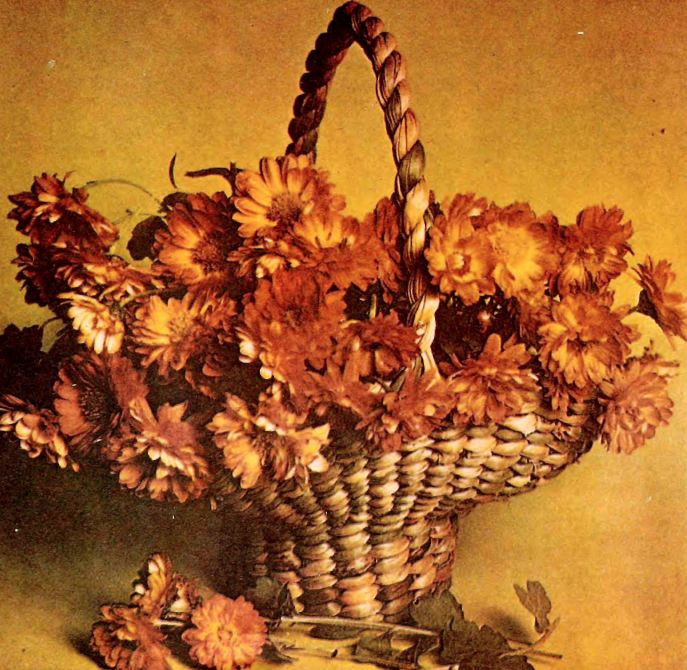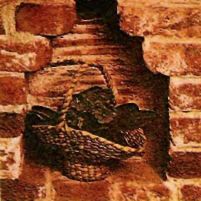
To weave the basket for a bouquet You will need:
20 of the stems with a length of 500 mm,a width of approximately 12 mm for racks; 4 stalks of good quality with a length of at least 120 cm, a diameter of not less than 12 mm for handle; 25-30 thin rods for weaving;
a small jar (canned) with a diameter of 75 mm and a height of 25 mm;
dish 200 mm in diameter; twine and duct tape.
If the base of the banks has a deep rim that cut a circle of cardboard and insert it so that the base was quite flat (see figure 1 on p.47).
Start to weave the basket as well as round the stand, but stands for take two of the stem (one on top of another, not side by side) to the size of the braids made up of 5x5 cells (figure 1). Proplatit way "twisting" three rows (or until the end of the banks, figure 2). Rack should be dual. Do not cut the ends of the stems, leave them long. Firmly attach the base to the can and fold the stand to the walls. Continue weaving way, "twisting" around the cans (saving stand double). Doplatit to top of banks (about six rows), then leave the ends of the stems free then to continue the weave.
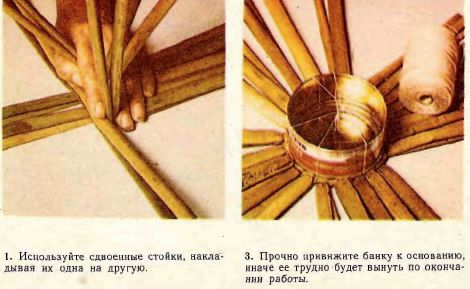
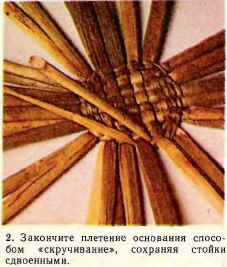
Remove a jar from the basket and tie it securely with duct tape in the center of the bottom of the inverted dish (figure 5). Put the base of the basket back on the jar and firmly tie them. Stand spread evenly on a plate and press them to the table (figure 6).
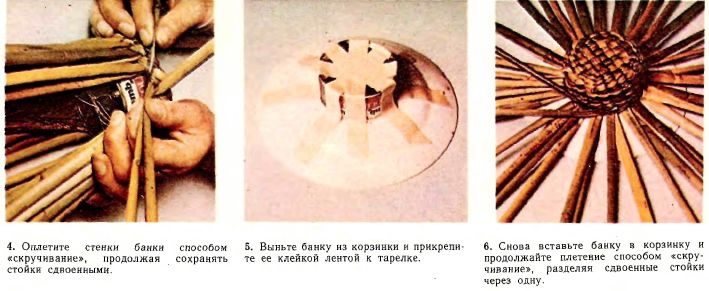
Continue weaving way "the twist", following the shape of the plates. In the first row of netting, place the rack dual, criss-crossing in the following order: two together, one, one; then the order of weaving is repeated. In the second row appetite all stand separately (figure 7). Continue stitching up to the height of about 75 mm.
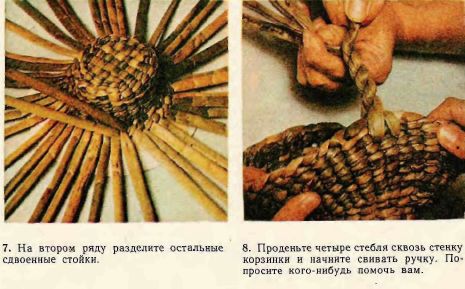
Finish weaving the walls of a simple edge (see Edge in figure 3).
Remove the plate, but leave the Bank at the base of the basket. Give your walls an oval shape. Pull the wall upward in those places where it will be attached to the handle.
Handle
Select the location for the handle. Take four long stem and put them in pairs, thick end to thin. Thread each pair through the wall of the basket (in place), leaving between them the same rack, and over them two or three rows of weaving. Pull the stems to half, and you have an eight all the same length. Divide these tips into two bundles of four stalks each (in the beam should be two thin and two thick end). To twist the stems into a bundle, ask someone to help you maintain the basket (figure 8). Take in each hand on the bundle of stems as close to the edge. Strongly twist the beam in the right hand, making two or three turns clockwise. Put the bundles from hand to hand. Now again twist the beam in the right hand two or three times, and again adjust the beams in places. Continue to twist the knob for a length of about 350 mm.
To secure the handle, pass a single beam through the opposite wall so that one pair of thin and thick ends passed from inside to outside and the other from the outside in under two or three rows of weaving (figure 9).
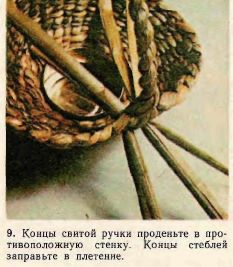
Repeat the same with another beam, threading it in the neighborhood through the same rack. Make sure that these places are exactly opposite the other end of the handle.
Now all eight ends need to fill in the wall. You can weave some of them down the other side. This will make the handle sturdy bole. Trim the protruding ends.
Hang the basket with the load leave it like that for a few hours. Wall and the handle will be pulled away acquire a beautiful form.
Do not let the basket dry out too quickly, as the stems may shrink and the basket will turn flabby.
If you want to use the basket for a bouquet of flowers, empty Bank, where you wove the need for water. In the basket you can place a pot of flowers or a bouquet of dried flowers.
